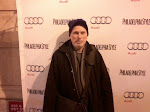Best Talker I Never Taped
Cage’s most famous musical composition is 4’ 33”. It is four minutes and thirty-three seconds of silence. His first book is Silence. His is the sound of a silencer. Cage tried to lower the rising deafening decibels of twentieth century music.
Cage was a wonderful talker. He lived at the end of his life on west 18th Street. From a window we could watch traffic moving up 6th Avenue. He had there a collection of cacti, of succulents; I presume Cage was as expert with cacti as he was with mushrooms. Were some of his cacti edible?
Cage was the best talker I never taped. As it happens, I taped many interviews. Eugene McCarthy and Daniel Berrigan had a direct understanding of the world, and man’s duty to it, far greater than Cage. Anarchy, by their standard, evinces fatuous dated quietism. Andy Warhol and Allen Ginsberg, outside of twentieth-century society like Cage because of their homosexuality, nevertheless were able to present themselves and their work in a significant way. W.H. Auden and Denise Levertov were better writers.
I tried to interview Ezra Pound. I phoned his Venice home when I was in Florence. An English woman answered -- Dorothy Shakespeare? Olga Rudge? “You wish to see Mr. Pound?“ she asked. “Write first.” I returned to New York and, as I composed my letter, Pound died.
Cage was a wonderful talker. He lived at the end of his life on west 18th Street. From a window we could watch traffic moving up 6th Avenue. He had there a collection of cacti, of succulents; I presume Cage was as expert with cacti as he was with mushrooms. Were some of his cacti edible?
Cage was the best talker I never taped. As it happens, I taped many interviews. Eugene McCarthy and Daniel Berrigan had a direct understanding of the world, and man’s duty to it, far greater than Cage. Anarchy, by their standard, evinces fatuous dated quietism. Andy Warhol and Allen Ginsberg, outside of twentieth-century society like Cage because of their homosexuality, nevertheless were able to present themselves and their work in a significant way. W.H. Auden and Denise Levertov were better writers.
I tried to interview Ezra Pound. I phoned his Venice home when I was in Florence. An English woman answered -- Dorothy Shakespeare? Olga Rudge? “You wish to see Mr. Pound?“ she asked. “Write first.” I returned to New York and, as I composed my letter, Pound died.

